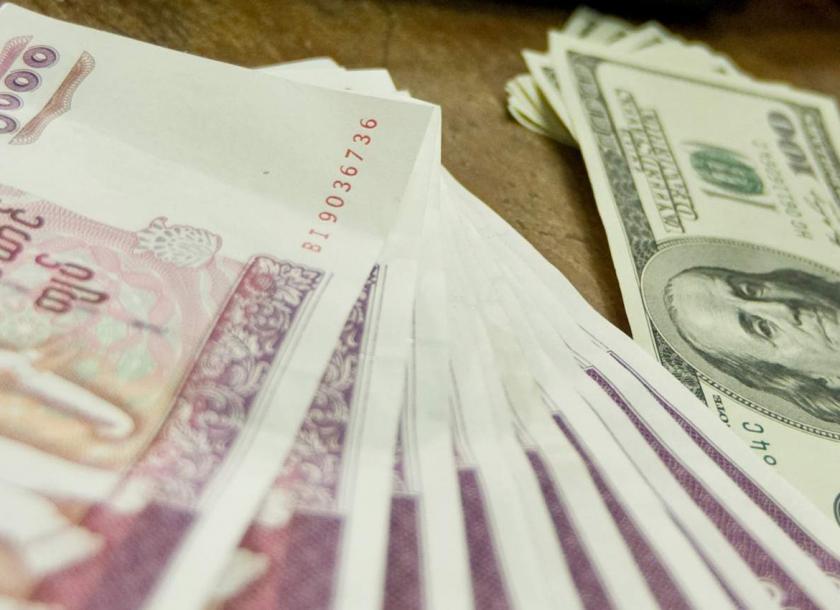Myanmar: Kyat hits strongest level against dollar in over a year
The Myanmar kyat appreciated to its strongest level against the US dollar in a year after the Central Bank of Myanmar (CBM) set its daily reference rate at K1,345 per dollar on Tuesday.
The kyat had weakened to K1,360 against the dollar last year. It opened this year at K1,361. The kyat hit a record low of K1,366 per dollar on July 21, 2016.
The higher value of the kyat is positive for local consumers as it comes at a time when domestic production is still lagging, forcing most to rely on imported goods such as petrol, building materials, cosmetics and electronics.
Last year, with the kyat at its weakest level against the dollar, consumers were forced to swallow higher prices for major imports, mainly fuel and industrial raw materials. So, a stronger local currency implies better buying power for Myanmar consumers.
Weak USD
One of the reasons for the stronger kyat is the weakening of the dollar. As the pace of the global economic recovery gathers momentum, central banks in Europe and Asia have signaled tighter monetary policies this year.
Heng Koon How, head of markets strategy at Singapore-based United Overseas Bank, expects the European Central Bank to stop its asset purchases by September this year. Meanwhile, the central banks of China, South Korea and Malaysia are all expected to raise interest rates this year.
On Monday, the Bank of Japan offered its most positive view on the economy and inflation in a decade, rousing speculation that it may exit its ultra-loose monetary policy earlier than expected. All that has driven demand for the euro, yen and other Asian currencies higher and pummeled the value of the dollar.
The greenback, meanwhile, has been ailing ever since US President Donald Trump pushed his tax reform package through in December last year. Advantages under the tax package had initially spurred hope of US corporations repatriating their offshore earnings into the country, boosting the value of the dollar.
“However, most US corporations are rather cash rich at the moment and have little incentive to repatriate their offshore retained earnings. As such, the tax package has been of little help to the ailing USD,” Mr Heng said.
Trade deficit
Despite the kyat’s recent appreciation versus the dollar though, local prices have yet to correct. At the current exchange rate, a liter of 95 Ron petrol still costs K855, unchanged from January 2, when the kyat trade at K1,361 versus the dollar.
One likely reason is doubt that the local currency will remain strong over the long term. For one thing, Myanmar runs a current account deficit, or trade deficit, that isn’t expected to narrow anytime soon. For the first nine months of 2017-18, that deficit hit $3.3 billion, increasing by around $368.8 million over the same period in 2016-17, according to the Ministry of Commerce.
During the period, Myanmar’s foreign trade topped $23 billion, up $3.8 billion year-over-year. Imports, while down from the year before, totaled $13.3 billion during the period.
Notably, with the volume of foreign direct investments (FDI) in 2018 appearing uncertain on the back of softening confidence in the government’s economic policies and potential strife in Rakhine, export volumes could come under further pressure this year.
Still, things are looking stable so far, with the manufacturing sector having received FDI totaling $1.5 billion for 108 projects in the last nine months, state media reported. The export value of finished industrial products from the sector was reported to be almost $5 billion during the period.
Meanwhile, rice exports have surged so far this year, hitting 2.6 million tonnes and bringing in $480 million more in revenue compared to the same period last year. Myanmar mainly exports agricultural products, animal and fisheries products, forest products and manufacturing goods.
Last December, the Myanmar Investment Commission (MIC) also invited companies to submit proposals for investments in 13 import substitution industries, including auto and auto parts, tractors and trailers, telephone and telecom equipment, machines and machine parts, power distribution and installation, iron and steel construction materials, fertilisers, plastic raw materials, paper, chemicals, edible oil, medical products and beauty products.
Source: https://www.mmtimes.com/news/kyat-hits-strongest-level-against-dollar-over-year.html


 English
English




